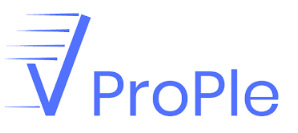This website use cookies to help you have a superior and more relevant browsing experience on the website.
Navigating the Challenges of Finding Top Talent: Strategies for Success
-
16/06/2023

Discover effective strategies for overcoming the challenges of finding top talent in today’s competitive business landscape. From building a strong employer brand to implementing data-driven hiring practices in online interview assessment, learn how to attract and recruit exceptional candidates for your organization.
In today’s competitive business landscape, finding and attracting top talent is no easy task. The demand for skilled professionals has increased, while the supply seems to be limited. As a result, organizations face numerous challenges in their quest to recruit the best candidates for their teams. However, with strategic approaches and innovative techniques, companies can overcome these obstacles and successfully find top talent. This article explores effective strategies for navigating the challenges of finding top talent and achieving success in recruitment.
Navigating the Challenges of Finding Top Talent: Strategies for Success
1. Building a Strong Employer Brand
One of the key strategies for attracting top talent is building a strong employer brand. Potential candidates are drawn to companies that have a positive reputation and offer a compelling work environment. To create a strong employer brand, organizations should focus on:
- Defining their unique value proposition and conveying it through consistent messaging.
- Showcasing their company culture, values, and employee testimonials to create an attractive brand image.
- Maintaining an active presence on social media and professional networking platforms to engage with potential candidates.
- Providing a positive candidate experience throughout the recruitment process to leave a lasting impression.
By investing in their employer brand, organizations can differentiate themselves from competitors and attract top talent who resonate with their values and culture.
2. Utilizing Targeted Sourcing Strategies
Finding top talent requires a proactive approach to sourcing candidates. Relying solely on traditional job postings may not be enough to reach the most qualified individuals of online interview assessment. Instead, organizations should leverage targeted sourcing strategies, including:
- Networking: Actively participating in industry events, conferences, and online communities to connect with potential candidates.
- Employee referrals: Implementing an employee referral program can tap into the existing network of high-performing employees who are likely to recommend top talent.
- Passive candidate engagement: Engaging with passive candidates who may not be actively job seeking but possess valuable skills and experience in interview as a service.
- Utilizing recruitment agencies: Partnering with specialized recruitment agencies can help tap into their networks and expertise in finding top talent.
By diversifying their sourcing strategies, organizations can cast a wider net and increase their chances of finding the best candidates.
3. Implementing Data-Driven Hiring Practices
Data-driven hiring practices enable organizations to make informed decisions and improve the efficiency of their recruitment process. By leveraging data and analytics, organizations can:
- Identify the most effective sourcing channels and allocate resources accordingly.
- Use pre-employment assessments and skill tests to evaluate candidates objectively.
- Analyze candidate feedback and engagement metrics to optimize the candidate experience.
- Measure and track the success of recruitment strategies, including time-to-hire and quality-of-hire.
By incorporating data-driven practices into their hiring process, organizations can refine their strategies, save time, and make better-informed decisions when selecting top talent.
4. Developing Talent Pipelines
Building a talent pipeline is a proactive approach to recruitment in online interview assessment that involves engaging with potential candidates before specific job openings arise. By cultivating relationships with talented individuals over time, organizations can create a pool of pre-qualified candidates who are ready to be considered when suitable positions become available.
To develop a talent pipeline, organizations can:
- Participate in career fairs, industry events, and educational institutions to connect with aspiring professionals.
- Engage with passive candidates through talent communities and online platforms.
- Provide opportunities for internships, apprenticeships, or project-based work to identify promising candidates.
By nurturing relationships with candidates in a talent pipeline, organizations can reduce time-to-hire and ensure a continuous flow of top talent into their organization.
By following these strategies, you can increase your chances of finding top talent and building a successful team.

Additional Tips
- Use social media to contact a more extensive audience. Social media is a great way to reach potential candidates who may not be actively looking for a job. By creating engaging content and sharing job openings on your social media channels, you can reach a wider audience and attract more qualified candidates.
- Network with industry professionals. Networking is a great way to meet potential candidates and learn about their skills and experience. Attend industry occasions, join professional associations, and interface with people on LinkedIn.
- Offer competitive benefits. In addition to a competitive salary, top talent is also looking for competitive benefits. Consider offering advantages such as medical coverage, paid time off, and retirement plans.
- Create a culture of learning and development. Top talent needs to work for a company that will help them grow and develop their abilities. Create a culture of learning and development by providing opportunities for employees to take training courses, attend conferences, and network with other professionals.
By following these tips, you can make your company a more attractive place to work and increase your chances of finding top talent.
In conclusion, navigating the challenges of finding top talent requires a strategic and proactive approach. By building a strong employer brand, utilizing targeted sourcing strategies, implementing data-driven hiring practices, and developing talent pipelines, organizations can overcome these obstacles and attract the best candidates for their teams.
Building a strong employer brand helps organizations differentiate themselves and create a positive image that attracts top talent. Utilizing targeted sourcing strategies, such as networking, employee referrals, passive candidate engagement, and recruitment agencies, allows organizations to reach a wider pool of qualified candidates.
Implementing data-driven hiring practices enables organizations to make informed decisions and optimize their recruitment process through online interview assessment. By leveraging data and analytics, organizations can identify effective sourcing channels, evaluate candidates objectively, and measure recruitment success.
Developing talent pipelines through engagement with potential candidates before specific job openings arise can significantly reduce time-to-hire and ensure a continuous flow of top talent into the organization.
It is important for organizations to continually evaluate and adapt their recruitment strategies to stay updated on emerging trends and candidate preferences. By investing in their talent acquisition efforts and creating a positive candidate experience, organizations can position themselves as employers of choice and attract exceptional candidates.
In summary, while the challenges of finding top talent may be significant, organizations can navigate these obstacles by implementing effective strategies. By doing so, they can build high-performing teams, foster innovation, and achieve their business goals with the support of exceptional talent.


